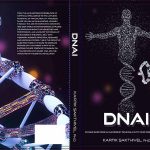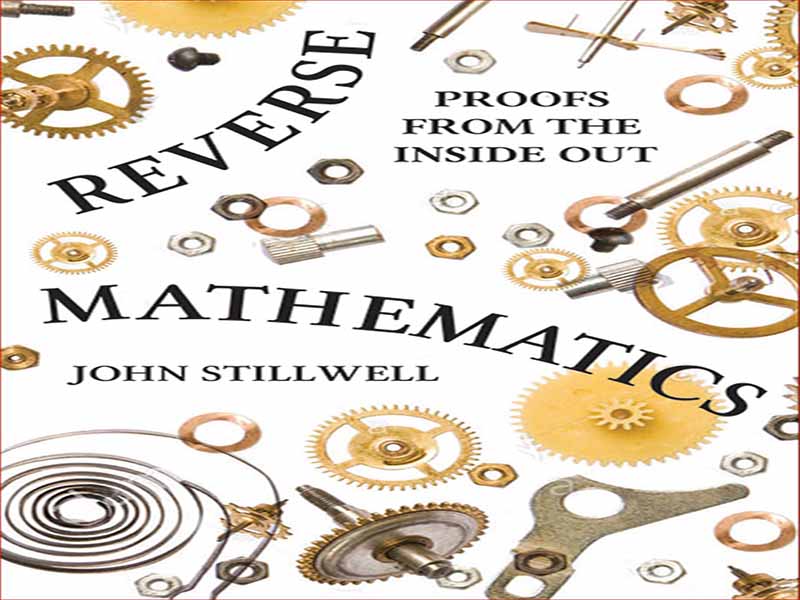- عنوان: REVERSE MATHEMATICS
- نویسنده: John Stillwell
- حوزه: مبانی ریاضیات
- سال انتشار: 2018
- تعداد صفحه: 199
- زبان اصلی انگلیسی
- نوع فایل: pdf
- حجم فایل: 3.18 مگابایت
این کتابی است درباره مبانی ریاضیات – موضوعی که زمانی مورد علاقه ریاضیدانان برجسته ای مانند ددکیند، پوانکاره و هیلبرت بود، اما امروز متاسفانه مورد غفلت قرار گرفته است. این غفلت به چند دلیل مایه تاسف است: • با تقسیم شدن ریاضیات به تخصص های بیشتر و بیشتر، نیاز به دیدگاه یکپارچه بیشتر می شود. • مبانی نه تنها ریاضیات، بلکه رشته های همسایه علوم کامپیوتر و فیزیک را متحد می کند. • پیشرفت های اخیر در منطق ریاضی، نور جدیدی را بر پایه های تحلیل، و مفهوم گریزان «عمق» ریاضی پرتاب می کند. این کتاب با تمرکز بر مبحث ریاضیات معکوس، به ویژه آخرین نکته را هدف قرار داده است. همانطور که از نامش پیداست، ریاضیات معکوس به مفهوم برهان در جهت مخالف عادی نگاه می کند. به جای جستجوی پیامدهای بدیهیات داده شده، بدیهیات مورد نیاز برای اثبات قضایای داده شده را جستجو می کند. این در واقع یک ایده قدیمی است، حداقل در مبانی هندسه. از زمان اقلیدس تا قرن نوزدهم، این سوال داغ بود که آیا بدیهیات موازی برای اثبات قضایایی مانند قضیه فیثاغورث مورد نیاز است یا خیر. تاریخچه بدیهیات موازی را در فصل 1 این کتاب، به عنوان مطالعه موردی در ایده های ریاضی معکوس، همراه با داستان مشابه بدیهیات انتخاب در نظریه مجموعه ها مرور می کنیم. اگرچه هر دوی این بدیهیات ایده ریاضیات معکوس را نشان میدهند، اما موضوع همانطور که امروزه درک میشود، عمدتاً در منطقهای باریک اما مهم بین هندسه و نظریه مجموعهها قرار دارد: نظریه اعداد حقیقی، که پایهی حساب دیفرانسیل و انتگرال، تجزیه و تحلیل، و بیشتر فیزیک ریاضی است. . (ریاضیات معکوس نیز کمک های جالبی به جبر، ترکیبات و توپولوژی کرده است که به طور مختصر به آنها اشاره می کنیم.) اعداد واقعی، همانطور که امروزه آنها را درک می کنیم، از روش های الکترونیکی قرن نوزدهم برای محاسبه تحلیل و هندسه پدید آمده اند. با ساختن اعداد حقیقی از مجموعه اعداد گویا (و در نتیجه، در نهایت، از مجموعه اعداد طبیعی) میتوان دنبالههایی از اعداد حقیقی و توابع پیوسته دلخواه – و از این رو بیشتر اشیاء تجزیه و تحلیل – را توسط مجموعههایی از اعداد طبیعی رمزگذاری کرد. حسابی تحلیل، و همچنین قضایای اساسی تحلیل، در فصول 2 و 3. پس از این، ما آماده ایم که بپرسیم: برای اثبات این قضایای اساسی به کدام بدیهیات نیاز داریم؟ پاسخ، تقریباً، مجموعه ای از بدیهیات برای اعداد طبیعی (اصول بدیهیات Peano) به اضافه یک اصل وجود مجموعه مناسب است. اکنون بدیهیات وجود مجموعه، بسته به قوت قضایایی که میخواهیم اثبات کنیم، دارای نقاط قوت مختلفی هستند. معلوم می شود که کمترین قدرت مفید ارتباط نزدیکی با مبانی محاسبات دارد: وجود مجموعه های قابل محاسبه را تأیید می کند. این به نوبه خود شامل مطالعه مفهوم محاسبات است که با تجزیه و تحلیل ادغام می شود زیرا هر دو مبنای مشترکی در حساب دارند. پس از مقدمهای غیررسمی برای محاسبهپذیری در فصل 4، مفهوم رسمی محاسبات و محاسبه آن را در فصل 5 توسعه میدهیم. در فصلهای 6 و 7 ایدههای تحلیل، حساب و محاسبات را در برخی از سیستمهای بدیهی برای تحلیل گرد هم میآوریم. معروف به RCA0، WKL0 و ACA0. این سیستمها، که عمدتاً با وجود مجموعهای از بدیهیات قدرت فزاینده متمایز میشوند، بین آنها اکثر قضایای اساسی تحلیل را اثبات میکنند. جالبتر اینکه، آنها قضایای اساسی را در سه سطح دستهبندی میکنند، زیرا زمانی که بالاتر از سطح «پایه» RCA0 باشند، اکثر قضایا معادل اصل وجود مجموعه ای از سیستمی هستند که آنها را ثابت می کند. این امر باعث میشود که هر یک از این مجموعهای از بدیهیات وجودی، به معنایی که فریدمن (1975) بیان کرده است، «بدیهی درست» شوند: وقتی یک قضیه از بدیهیات درست اثبات میشود، بدیهیات را میتوان از قضیه اثبات کرد. به عنوان مثال، خواهیم دید که RCA0 می تواند قضیه مقدار متوسط را اثبات کند. اصل de_ning از WKL0 اصل درست برای اثبات قضیه هاینه بورل و قضیه ارزش افراطی است. و اصل de_ning از ACA0 بدیهی درست برای اثبات معیار همگرایی کوشی و قضیه Bolzano-Weierstrass است. بنابراین در ریاضیات معکوس، ما با بازیگران معمولی از یک دوره تحلیل واقعی مقدماتی مواجه می شویم، اما در یک داستان کاملاً جدید.
this is a book about the foundations of mathematics—a topic once of interest to outstandingmathematicians, such asDedekind, Poincaré, and Hilbert, but today sadly neglected. this neglect is unfortunate for several reasons: • As mathematics splits into more and more specialties, the need for a unifying viewpoint becomes more acute. • Foundations unify not only mathematics but also the neighboring disciplines of computer science and physics. • Recent advances in mathematical logic throw new light on the foundations of analysis, and on the elusive concept of mathematical “depth.” this book aims at the last point in particular, by focusing on the topic of reverse mathematics. As its name suggests, reverse mathematics looks at the concept of proof in the opposite to normal direction. Instead of seeking the consequences of given axioms, it seeks the axioms needed to prove given theorems. this is actually an old idea, at least in the foundations of geometry. Fromthe time of Euclid until the nineteenth century it was a burning question whether the parallel axiom was needed to prove theorems such as the Pythagorean theorem. We review the history of the parallel axiom in chapter 1 of this book, as a case study in reverse mathematical ideas, together with the similar story of the axiom of choice in set theory. Although both these axioms illustrate the idea of reverse mathematics, the subject as it is understood today liesmostly in a narrowbut important region between geometry and set theory: the theory of real numbers, which is the foundation of calculus, analysis, and most of mathematical physics. (Reversemathematics has alsomade interesting contributions to algebra, combinatorics, and topology which we mention more brie_y.) the real numbers, as we understand them today, emerged fromnineteenth century e_orts to arithmetize analysis and geometry. By building real numbers fromsets of rational numbers (and hence, ultimately, from sets of natural numbers) it becomes possible to encode sequences of real numbers and arbitrary continuous functions—and hencemost of the objects of analysis—by sets of natural numbers.We review the arithmetization of analysis, and also the basic theorems of analysis, in chapters 2 and 3. A er this we are ready to ask: which axioms do we need to prove these basic theorems? the answer, roughly, is a set of axioms for the natural numbers (the Peano axioms) plus a suitable set existence axiom. Now set existence axioms come in various strengths, depending on the strength of the theorems we wish to prove. the lowest useful strength turns out to be intimately related to the foundations of computation: it asserts the existence of computable sets. this in turn involves a study of the concept of computation, which merges with analysis because both have a common basis in arithmetic. A er an informal introduction to computability in chapter 4 we develop a formal concept of computation, and its arithmetization, in chapter 5. In chapters 6 and 7 we bring together the ideas of analysis, arithmetic, and computation in some axiom systems for analysis, known as RCA0, WKL0, and ACA0. these systems, which are distinguished mainly by set existence axioms of increasing strength, between them provemost of the basic theorems of analysis.More remarkably, they sort the basic theorems into three levels because, once above the “base” level of RCA0, most theorems are equivalent to the set existence axiom of the system that proves them. this makes each of these set existence axioms the “right axiom” in the sense articulated by Friedman (1975): When a theorem is proved from the right axioms, the axioms can be proved from the theorem. We will see, for example, that RCA0 can prove the intermediate value theorem; the de_ning axiom of WKL0 is the right axiom to prove the Heine-Borel theorem and the extreme value theorem; and the de_ning axiom of ACA0 is the right axiom to prove the Cauchy convergence criterion and the Bolzano-Weierstrass theorem. thus in reverse mathematics we meet the usual cast of characters from an introductory real analysis course, but in an entirely new story.
این کتاب را میتوانید بصورت رایگان از لینک زیر دانلود نمایید.
Download: REVERSE MATHEMATICS
































نظرات کاربران